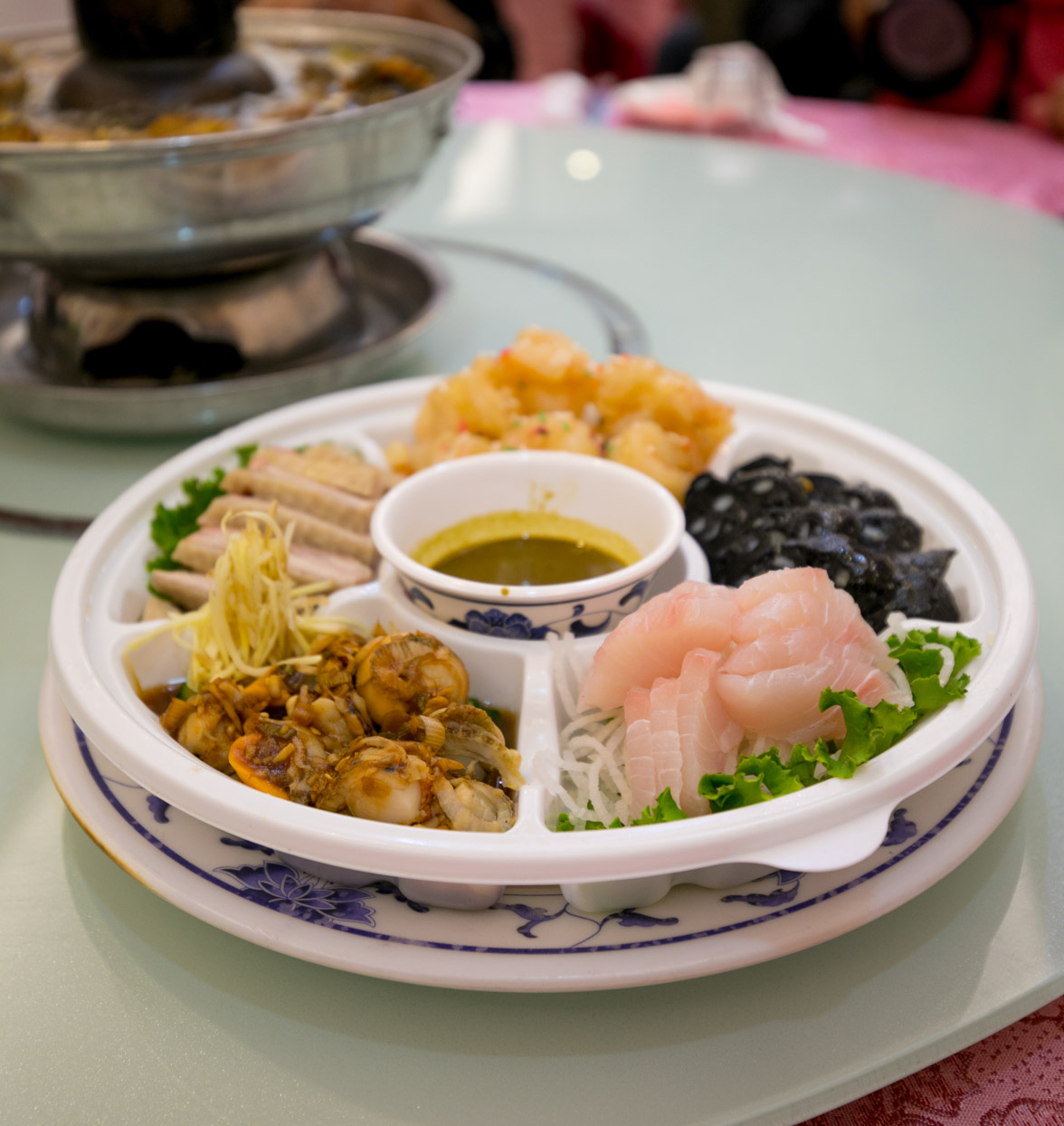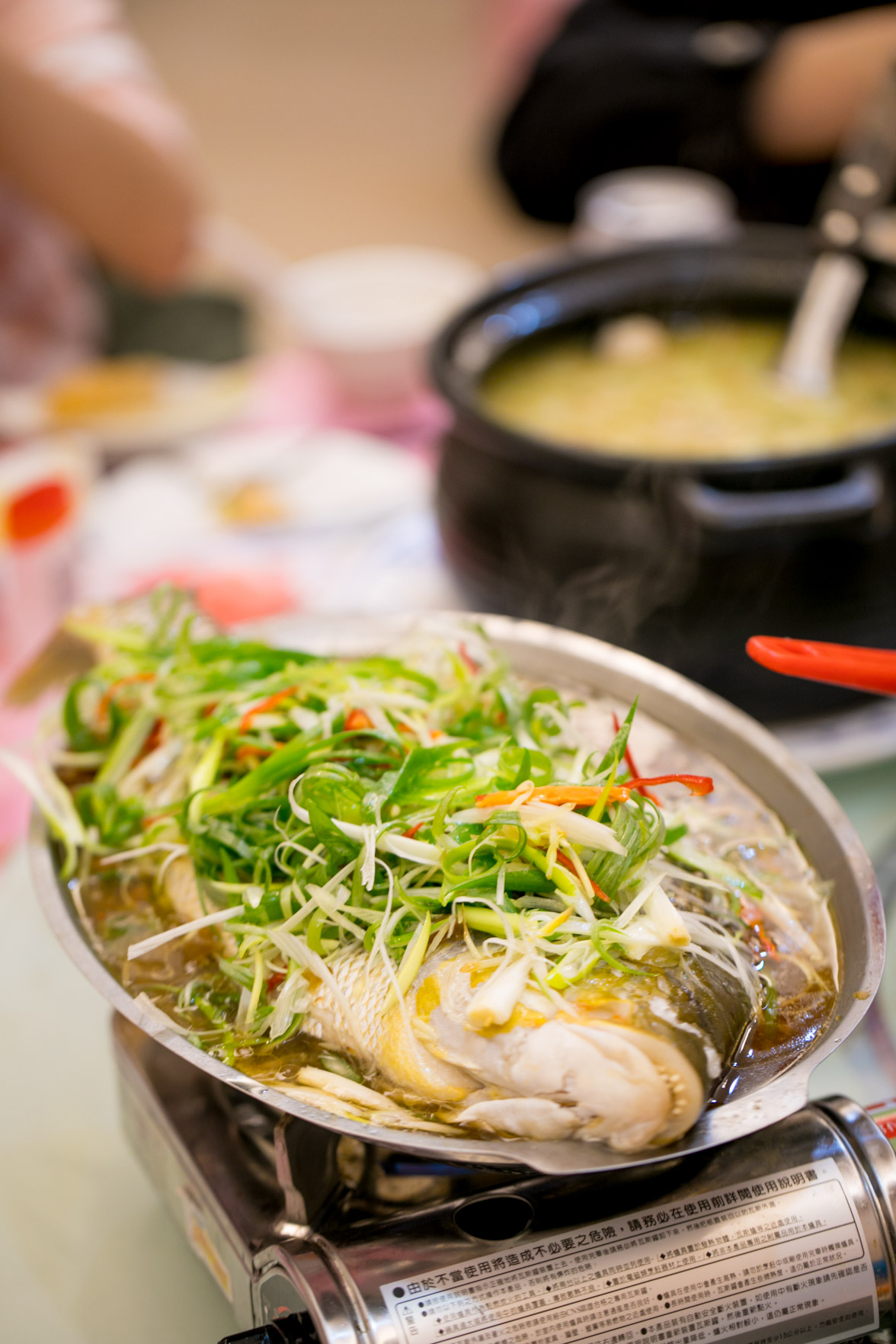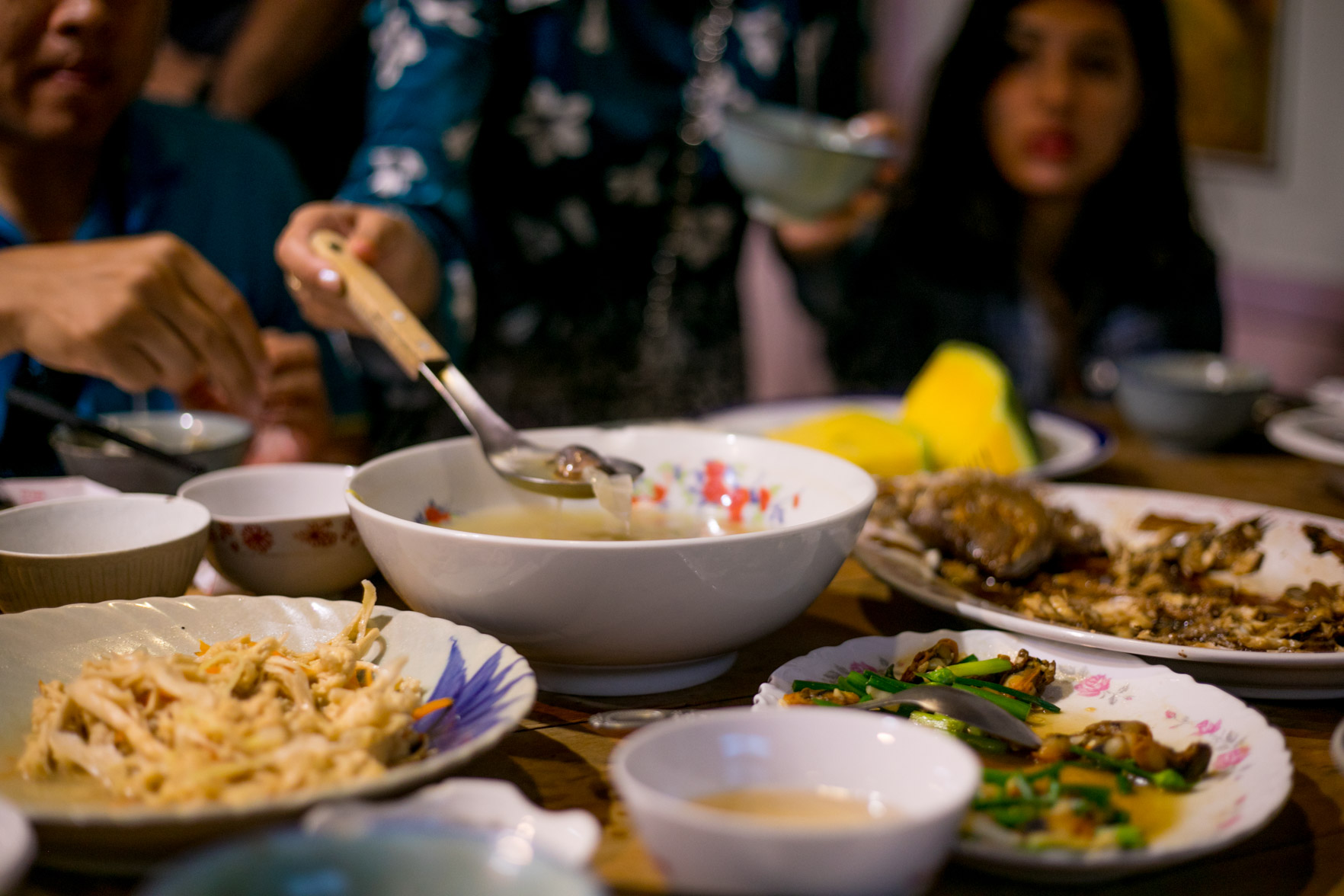There are rules to eating out in Taiwan. While many would find them preachy/preposterous, they are lessons in kindness towards others and may be even in sustainability. I haven’t found customers piling up soiled plates, placing all the leftovers and bones in one plate, making it easier for the cleaning staff to ready the table for the next person - in any place I’ve visited. Not only that, some even carry leftovers in a tissue and store it in their bag so that there's minimum wastage.
If you haven't read or heard about it yet - then you should know that in Taiwan eating out is not a question of culture or choice, but a necessity which holds importance especially for the fact that in Taipei; the astronomical real estate rates demand that every home skips the kitchen. Pan a One square kilometer radius anywhere in Taipei and it has at least fifty restaurants, of all sizes and dimensions. Tiny garage-size eateries that serve just one item in several variations are one kind and unlike its so-called brother China, Taiwan is not about flaming woks, instead it is mostly about one dish- noodle soup/congee/porridge, but i'm not going to talk about Taipei in this post. I’m going to talk about the food in Taiwan's own little Hawaii- Penghu, an archipelago in the Pacific.
View of the Magong City harbour in Penghu County
So what makes Penghu Islands so special with regards to Taiwanese cuisine? And how much of a departure is it from the mainland?
I would say that the cuisine here is drastically different from the mainland in terms what ingredients are considered daily staples. Here it is one element of one definitive kind- seafood, seafood of all kinds, shapes and endemic - fish, crustaceans, sea cucumbers, etc. And while we’re at it, you should also know that Penghu is a quaint little island and literal and figurative follower of ‘early to bed and early to rise’, so the lunch and dinner timings are down to the T. Between eleven to one for lunch and five to eight for dinner, make your last order at half past seven others too little too late, for the doors close at eight.
Adong Seafood on Xindian Street in Penghu County is considered the holy grail of seafood, from boiling hotpots of claypot fish-head to stir-fried sea mushroom, cuttlefish ink sausages and freshly fried shrimp rolls that boast of tender texture inside along with stir-fried bean thread with seaweed. This multi-storey complex is actually one restaurant, yes, one family owned restaurant that spans over three to four floors and every floor brimming with patrons, most tables occupied by large families, which also tells you that people are close knit and family oriented here.
Now if you’re wondering about breakfast, there are quite a few different options - if you are running to work and need a bite on the move, then get a cup of fresh brewed coffee and sandwich from the nearest Seven-11 or like most peeps, head on over to any local favourite for some noodle soup OR Dan Bing- Taiwanese egg crepe OR Shao Bing - unleavened layered flatbread and wash it down with a bowl of soyabean milk OR the one I consider most interesting and rare - Fan Tuan. Fan Tuan or Rice Balls are oblong, hand-rolled hot sticky rice, stuffed with a wide variety of things in it. Perhaps, one of the most common and interesting fillings being the red bean, pickled mustard greens, salted radish and either vegetable or pork floss. This one here in the picture is made up of a mix of plain and purple rice both and also owns a tiny bit of brown sugar in its center. Fan Tuan is difficult to get a hold of in Family Marts and 7/11s of Taiwan, but is sold in select specialty shops and places like Liu Mama Fan Tuan - a wildly popular breakfast stand in the Da'an District of Taipei. Fan Tuan over the years has also grown out of its lotus leaf casing to a plastic clear wrap one and comes in half a dozen options like a sweet one with white rice, pulverized cruller, brown sugar or a loaded savoury one that wrapped in seaweed encasing pork floss, braised egg, minced pork, pickled mustard greens and burdock root.
Penghu’s two endemic confections are the Brown Sugar Cake and highly photogenic Cactus Ice-cream. Cactus Ice-cream sounds baffling and almost daunting until you see a bright pink, cheerful looking sorbet that tastes strangely familiar yet inexplicable. Brown sugar cake - a true Penghu speciality can now be found in a handful of Taipei bakeries and other Taiwanese cities and airports. Since using ovens is a rarity in Taiwan, the making of this cake involves steaming rather than baking using a mix of all-purpose and rice flour, baking soda, baking powder, sesame seeds, eggs, milk and oil; a sugar syrup made of brown sugar and honey is mixed with the batter giving the cake a typically brown sugar like colour. The blubber from the rice flour is what gives this cake the chewy texture that is synonymous with all of Taiwanese cooking, referred to as the 'Q'’, Taiwanese quest for a springy, chewy texture in food - hot or cold, sweet and savoury. 'Q' is derived from Taiwanese Hokkien word 'k'iu' and is a cornerstone of their cuisine, a signature chewiness that’s addictively soft and rubbery in a pleasing way. It translates to Tapoica in Bubble Tea or the springy fish cakes and meatballs on a stick - the most popular example being the Taiwanese Mochi. One can go on a month long expedition just to find, experience and enjoy the spoils of 'Q' in different food items and the more you discover 'Q' in its different forms, the closer you get to the realization that it's a nation-wide obsession with a mouthfeel that finds its way in every meal here.
If you like your meals authentic and prefer to eat inside an old Taiwanese home, then Cauliflower Old Memory Restaurant on Xindian Road is closest you will get to it. COM is a place full of endearing little details right from the exposed brick outside, the seashell and chinese ceramic facade to its interiors that looks and feels like a museum showcase full of local artefacts and old film posters. The strong points of this place have to be the food - locally sourced, quintessentially Taiwanese with no western influences whatsoever. The meal begins in typical Taiwanese fashion - tumblers of iced black tea with the first plate to arrive being a seaweed omelette; simple, flavourful and something that is appreciated across the palate spectrum. This is followed by pure delight in the form of - Braised Chinese Cabbage, Taiwanese style Cauliflower, Tofu with Oysters, stir fried Oysters, stir fried Squid and lastly the speciality Mackerel cooked in light soy that certainly brings out all the umame possible from the island. I noticed in most places, the penultimate dish to hit the table with is always the mixed seafood soup that is adored and savoured by all locals every single day. Slices of juicy sweet Yellow Watermelon serve as palate cleansers and as the closing dish of the meal.
One can talk about South East Asian cuisine and never forget to emphasise on the use of Chopsticks. So what kind of chopsticks is Taiwan into? Before I explain which and why, let’s understand the neighbouring countries’ chops - Chinese on one hand believe in sharing plates on a long or round table and thus require you to reach into the center to pick the food, hence Chinese Chopsticks are usually long and not pointy (they indulge in a lot of hot-pots and long chopsticks keep the hands at a distance from the boiling pot), Japanese cuisine on the other hand does not profess the sharing of food, food is placed in close proximity to the body so everyone has their own pair of chopsticks. So chopsticks are short, but also pointed since Japanese cuisine is a lot about fish where the pointed chopstick facilitate a good grip.
Now coming to Taiwan, most of their food influences come from China and Japan, but the culture here is always about dining in groups or families, so chopsticks are not pointed, always long and made of melamine. That said, using chopsticks is not a compulsion in this part of South Asia. Forks and spoons are always available upon request, but the simple fact that eating with chopsticks lets you feel every ingredient, its texture, slowing down the interval between each bite, uniting you with the food itself is a good reason that why you should give chopsticks a try.
Now, looking for some baked goods in Penghu?
You'll be surprised that there are a handful of small bakeries that bake loaves, rolls and buns, popularly finished with scallion on top and some bakers even put their afternoon produce on a pick-up truck and head straight to the harbour where boat after boat ushers in fresh catch and there's always a crowd of restaurant owners and individuals waiting for this arrival. Hunger followed by a sight of truck fulls of freshly baked goodies is obviously irresistible. The incredibly tender rolls filled with shredded salmon, cheese and tomato or twisted pull-apart buns stuffed with shredded pork, cheese and lettuce - everything is incredibly affordable (from 20NT - 40NT) and sells out in a matter of thirty minutes while two or three different vessels dock on the harbour and empty their catch.
Penghu, an archipelago boasts a generous diversity in the food across its various islands.
Like Qimei (pronounced chi-mei) thats located south of Penghu is a tiny island that is well-known for its diving and snorkelling sites. Cactus ice-cream can be found here as well and so can be ‘Abalone’, which is a rather large sea snail that has a distinctly shiny coat on the inside of its shell. Abalone are considered expensive in any market, but are affordable here. Another common item on the table here is the Sea Urchin, which peculiarly is minced and stir fried along with rice, eggs, scallion and minute fish.
So what makes Penghu's cuisine special? Is it the abundance of seafood? That’s a no brainer and yes, absolutely! This is a place where almost every meal is about eating fresh sea-food along with the dynamic duo of any South-East Asian country - Noodles and Rice. While most of your food encounters here will be one-dimensional -(boiled and minimal use of spice and salt), if you’re lucky with a kitchen in your AirBnb, Hostel or Apartment you should and you must attempt to whip up the mainland's most talked about preparation - that bowl of stinging Taiwanese Beef Noodle Soup.
A heartfelt thank you to the Taiwan Tourism Bureau in India and Think Strawberries that let me experience this culture, sights and of course all the delicious food across Taiwan. Penghu Island is part of Bay Tourism 2018, in which 10 offshore islands from 6 countries are selected as demonstration points, which the 3 islands of Qimei, Yuwong and Jibei of the Penghu archipelago are a part of.
Given that Penghu will host the 14th annual conference of the Most Beautiful Bay in the World (MBBW) in 2018, Penghu County Government has led its team to participate in the 20th anniversary and the annual conference of MBBW held at Vannes, Bretagne, France to promote the bay tourism of Penghu.
To read more about Penghu, follow the link: https://www.penghu-nsa.gov.tw/english/ActivitiesDetailE001210.aspx?Cond=76c30ace-09f0-47a2-a011-eb70d645b14f








